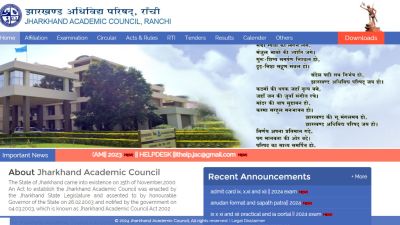- India
- International
Despite decades of death and despair, Kolar’s golden dreams refuse to die
It was a town that sat on gold, but lost its lustre. A blockbuster Kannada film brings it new fame, but KGF has many more stories to tell.
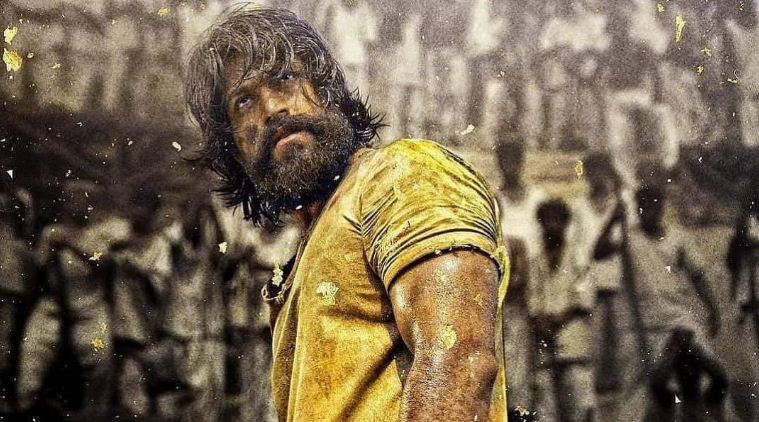 Yash in the action film, KGF-1.
Yash in the action film, KGF-1.
These are called fields, ma! We are walking on gold!” It could be a trick of light but the hill we are climbing up — one of the many mounds that squat in the heart of KGF town — glints mellow gold in the evening sun. “Even today, people collect soil from near the mines in hope of finding gold,” says T Selvaraj, 63.
In 1972, Selvaraj was 17 when the death of his father forced him to drop out of college and join the Champions mine as an underground miner, an employee of the Bharat Gold Mines Ltd (BGML). “The first time I entered the mines, I was terrified. I entered the cage, and there were around 50 people packed in it. It was a straight fall of 1.5 km. We dropped down in three minutes. I said I can’t do it. Let’s go somewhere else. But there was no other work, no other option. I had to survive,” he says.
The hilltop offers a panoramic view of the Kolar Gold Fields. It is a serene landscape, washed over in places by melancholy — is this what the Turkish novelist Orhan Pamuk so lovingly called huzun? Cracks run through deserted buildings and workshops; picturesque bungalows have surrendered to wild weed; and in the silent mining shafts is the deepening stain of rust. Below us, sprawls the giant iron carcass of the gold mill, as if frozen in mid-collapse — machines sinking into the sand, iron pillars teetering, like a beast that bled to a red-ochre death.
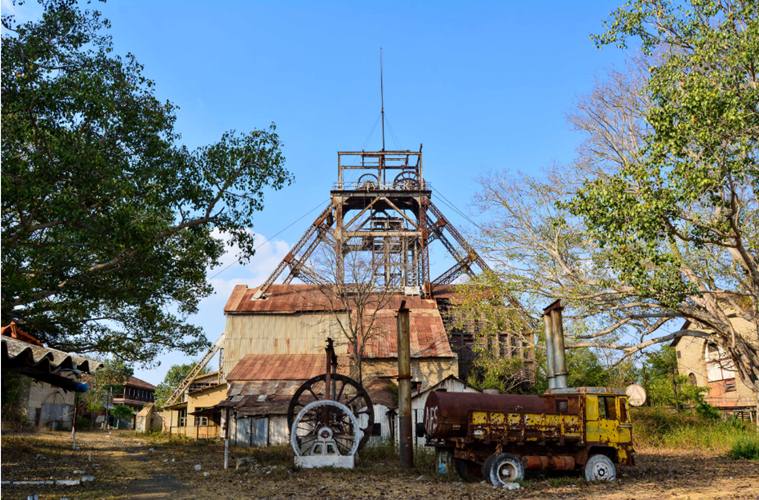 Fields of hope: Only a couple of guards and several stray dogs while away their time at the Edgar shaft of the Mysore mine. (Photo: Meghana Sastry)
Fields of hope: Only a couple of guards and several stray dogs while away their time at the Edgar shaft of the Mysore mine. (Photo: Meghana Sastry)
But even now, 18 years after the mines shut, Selvaraj turns up at the temporary office of the BGM All Employees Industrial Cooperative Society, as do a group of hardy, greying miners, to “keep the spirits up” and strategise the next move in a long battle to reopen the mines. “We aren’t paid any salaries. But I go there to ensure the next generation’s future. Yes, they may have more options, but it is gold, ma! Who doesn’t want gold?” he says.
It is not the slow churn of geological time which has shaped this hill on which we stand; but only over 140-odd years of mining, which began in 19th century in this rocky town in Karnataka and ground to a halt in 2001, when the government decided to shut the loss-making mines. The residue of the mining process, which involved treating gold slurry with cyanide to extract the noble metal, had by then piled into 13 such hillocks (each about 100 ft high), nonchalantly called “cyanide dumps” by residents. On windy days, the fine pale-yellow dust flies into homes and shops, and settles on dining tables and lungs, like a troubling gust from the past.

In Prashant Neel’s KGF-1, a Kannada movie that released in January and has broken new ground for its film industry, Kolar’s history of mining is turned into a larger-than-life cinematic fantasy. The action film, which was released in Hindi, Tamil, Kannada and even played in Pakistani theatres, earned an estimated Rs 200 crore. Shot on this largest of tailing dumps, the film imagines the mines as a menacing naraka (hell), where worker-slaves are ruthlessly put to work on pain of death — and eventually rescued by the brawny, long-haired hero played by actor Yash.
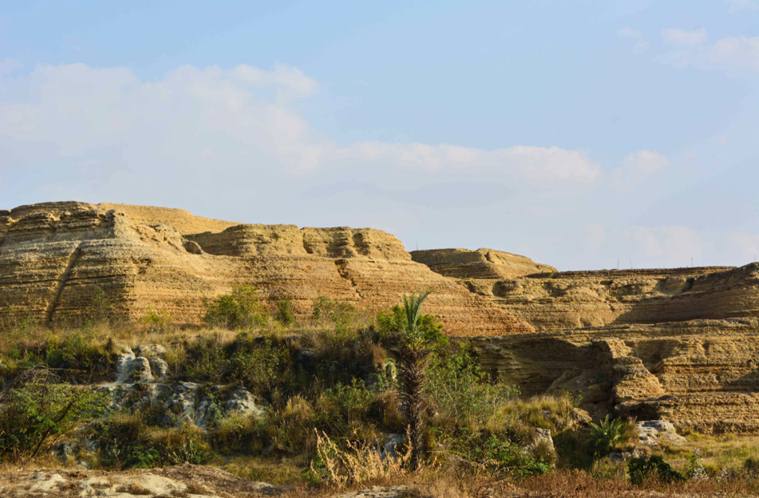 The smell of dreams: The ‘cyanide’ dump. (Photo: Meghana Sastry)
The smell of dreams: The ‘cyanide’ dump. (Photo: Meghana Sastry)
“Keelay ponaa ponam, mele vandha panam (If you go down, there is death; if you come up, you find wealth).”
It’s an aphorism that trips easily off tongues in KGF, as former miners talk about the bitter choices that brought their ancestors to this land.
The gold rush to Kolar began in the 19th century, after the defeat of Tipu Sultan drew British prospectors to the land and the Wodeyar kings of Mysore handed out leases on generous terms. In 1880, John Taylor and Sons, a firm of mining engineers, hit gold in five mines of the Kolar Gold Fields. The labour for the difficult, risky work came from the neighbouring districts of North Arcot, Salem and Dharmapuri in then-Madras Presidency — as well as from Andhra Pradesh and Kerala. Gangs of contractors enticed the largely landless coolies from the so-called “lower caste” Adi Dravida community. “They were often given false hopes — that the British were educated, that they would get food and money. Instead, they were sent to work in dangerous conditions, with no fixed working hours, and meagre pay. Sometimes, they had to work for a couple of days at a stretch,” says S Srikumar, a local resident and author of a history of the town, Kolar Gold Fields (Unfolding the Untold).
“We had no land. There was a lot of casteism there,” says SD Babu, 45, whose family came from North Arcot (now the region around Katpadi). “My father spoke about how our houses in the Paraiya cheri (street) were often set on fire by upper-caste people. He and his friends once smuggled out the gunpowder used in the mines and went back for revenge — he set their houses on fire.”
Most labourers came from Tamil Nadu; the Adi-Andhras were the conservancy workers; and those from Kerala had the job of drilling and blasting. “My grandfather came here from Palakkad. There were many restrictions of what Ezhavas could or could not wear. Not just that, my father hated how the upper castes would not even call him by his name, Pazhani. ‘Ai, Pazhani-thendi, (Hey you, Pazhani the beggar)’, they would say,” recalls KM Divakaran, 63, a third-generation KGF resident and former chief engineer of BGML.
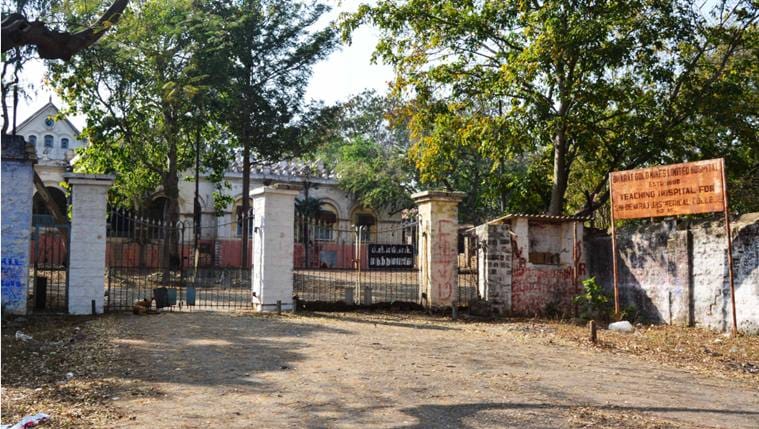 The BGML hospital, shut soon after the mines, is among many buildings going to ruin in the town. (Photo: Meghana Sastry)
The BGML hospital, shut soon after the mines, is among many buildings going to ruin in the town. (Photo: Meghana Sastry)
In her landmark history of KGF’s working-class life, Miners and Millhands: Work, Culture and Politics in Princely Mysore (Sage, 1998), Janaki Nair writes about the many accidents which claimed lives in the mines in the early years — “falling away of workers in shafts and winzes [often due to exhaustion], blasting accidents, and the collapse of cages”. The British ran the mines with very little considerations of the liberty or needs of miners. Paranoid about pilferage of gold, they put in place a system of surveillance, overseen by Punjabi security personnel, who put the workers through humiliating and invasive body checks, recounts Nair. If any miner was caught smuggling out gold, the punishment was dire — they would be “mined out” or expelled from the town. Till a hydroelectric project started at Sivasamudra Falls in 1902, the workers would descend to the pits only with candles.
Eventually, as the British capitalists invested in technology and equipment, the KGF became a “modern mine”. Divakaran, who grew up in a labour colony and rose to the higher echelons of BGML, is among the most passionate votaries of reopening the mines.
“The KGF had the best technology and engineering. Electricity reached every corner of the 1400-km long tunnels. Every nook and corner had to have air — so we pumped in cool air from the air-conditioning plants on top,” says Divakaran. In the 1980s, as the ore depleted, mining was being carried out at astonishing depths of 3 km or more. “For the employees, it was very difficult. Temperatures were close to 48-50 degrees Celsius or more, and humidity was 95 per cent. It was almost impossible to work,” he admits.
 Former miner Rajagopal. (Photo: Meghana Sastry)
Former miner Rajagopal. (Photo: Meghana Sastry)
In 1985, a mines secretary paid a visit to those stifling depths, says Divakaran. “He came back fully exhausted. Even if there was gold, it is humanly impossible to work at those depths, he said. His report said that we can work only at a shallow depth of 1 km,” he says. In less than two decades after that visit, the mines were shut down.
On a sunny January morning, all that glitters in the town are its golden Ambedkar statues. Portraits of the framer of the Indian constitution are everywhere — from humble shops to homes to large roadsigns, including one that has him lounging in a chair, Rajinikanth-like, as a roaring lion stands next to him. “I don’t think any other town in Karnataka has as many Ambedkar statues,” says Narayanswamy, an activist in KGF, which is a reserved Assembly constituency for Scheduled Castes (SCs).
Having been dragged out of feudal servitude by colonial capital, KGF’s first generation of miners faced racism, segregation, exploitation and the continued spectre of death. But they stuck on, creating a close-knit community of predominantly “lower caste” people, who found new ways of self-definition and identity. “Rather than being haunted by ‘the legend of better days’, the consciousness of the KGF miner was seared with memories of deprivation and of an organised structure of humiliation from which she/had escaped,” writes historian Nair in Miners and Millhands. The meagre money wage was better than the degrading, unpaid labour in fields. Nair cites songs that speak of giving up rice and gruel for “mutton and rice”, a new taste for coffee and the symbolism of a new road that opened up via “the world-famous liquor shop”.
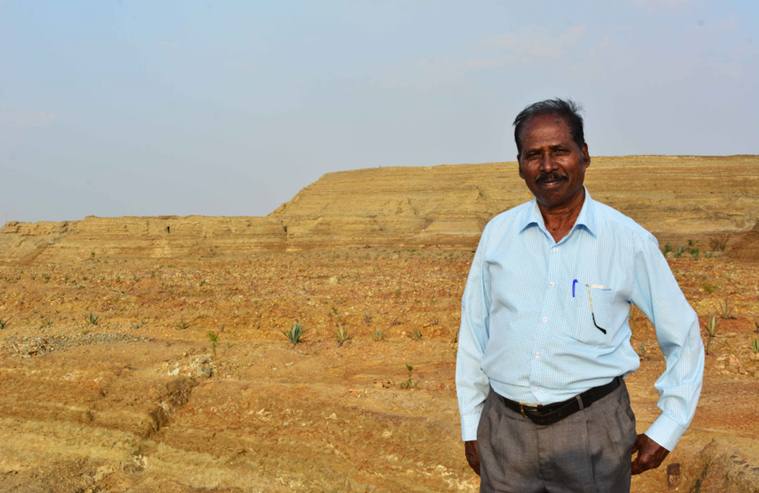 Former miner Selvaraj. (Photo: Meghana Sastry)
Former miner Selvaraj. (Photo: Meghana Sastry)
The miners also adopted the Western attire of shoes, pants and coats — and that sartorial pride survives today, along with a nostalgia for the Europeans. “I liked working with them. I was a boy, 14 years old, and I walked up to the metallurgical officer for a job. And he did,” says Rajagopal, who is 93 years old. He is dressed in a white striped shirt, over which he slips on a fine grey coat. He speaks slowly, voice quavering. “The Europeans encouraged me to study, to go to night school. They only liked honest people,” he says.
The loosening hold of caste rules drew the miners to new forms of religion. Long before BR Ambedkar asked his Dalit followers to embrace Buddhism, the influence of a radical Dalit thinker, Iyothee Dass Pandithar, was felt in KGF. In 1907, a group of community leaders converted to Buddhism. A journal edited by Iyothee Dass and published in Madras, the Tamizhan, which had become a vehicle of radical ideas of atheism, rationalism and self-respect began to be published from KGF.
SD Babu’s is among the few Buddhist families left in KGF; he lives in a tiny house which was once home to one of Tamizhan’s most provocative writers, G Appaduraiyar, who questioned both Brahmanical ideas and ideas of nationalism. “Did you know Periyar (EV Ramaswamy) also visited this house?” asks Babu. He recalls his father telling him about the men who would come to KGF to preach Buddhism. “He converted, but my mother didn’t. Eventually, I did too. We got freedom in our minds, more respect,” says Babu. “Here, even outside the BGML area, you won’t find casteism, like separate glasses for SC people. They know we have the numbers,” he says.
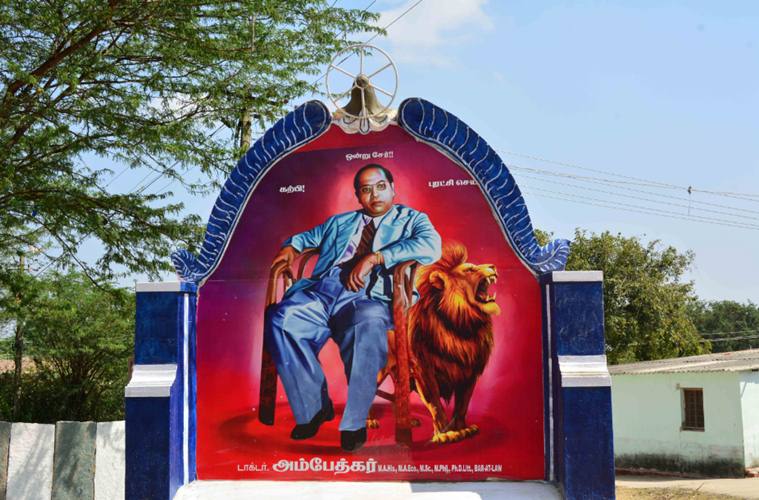 A flamboyant portrait of BR Ambedkar. (Photo: Meghana Sastry)
A flamboyant portrait of BR Ambedkar. (Photo: Meghana Sastry)
Ambedkar did come to this mining town in 1954 — a visit recalled with some mirth. “He came here for a day,” says Rajagopal with a chuckle. “When he visited the Buddhist temple, a crowd of people followed him there. The women fell at his feet. He was furious. ‘You are still slaves,’ he said and left,” he says.
“Oh, there were many deaths. This hand has seen many deaths and saved many lives,” says Selvaraj, who trained to be a rescue person in the mines. He saved miners trapped in sudden rock bursts, and dredged up dead bodies on bad days. “The fires were the most dangerous, because you could die of carbon monoxide poisoning in minutes.”
“It was dangerous work. Accidents almost every day,” agrees Roland Taylor, 68, a member of the Anglo-Indian community which worked here in large numbers till the British left in 1956. “My father was a foreman, who worked in the deepest underground. I remember him coming back home often with blood-stained clothes. You’d be working in narrow tunnels and suddenly a rock would burst, and you’d be covered under the debris, screaming for help,” he says. Taylor recalls ambulance sirens shrieking through the day; others recall the quivering of earth every time a rockburst took place.
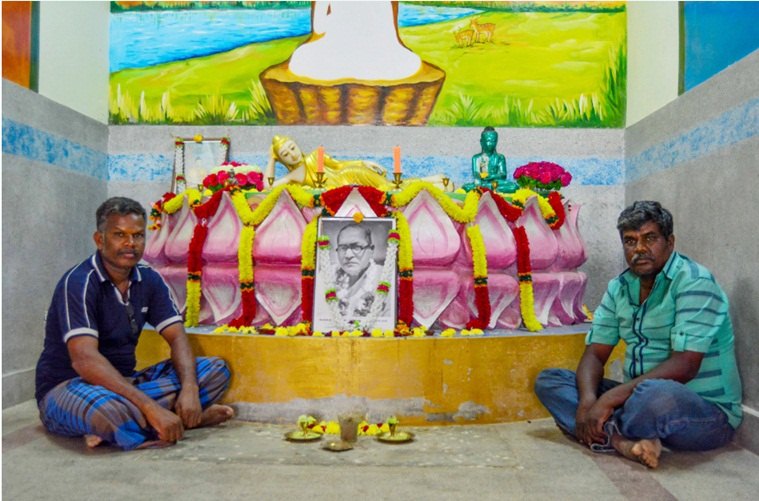 Inside the Buddhist temple in KGF. In 1907, a small number of Dalits converted to Buddhism, under the influence of radical thinker Iyothee Dass.
Inside the Buddhist temple in KGF. In 1907, a small number of Dalits converted to Buddhism, under the influence of radical thinker Iyothee Dass.
Through those years, 800 tonnes of gold were mined from Kolar’s rich earth — and 6,000 miners perished in the process, say old-timers, including those who died of silicosis, a disease of the lungs caused by prolonged exposure to the fine dust in the mines. “The government used to measure the damage to the lungs by points. The worker was compensated accordingly,” says James Paul, 66, a retired schoolteacher. “For one point, they would get Rs 100. After working 20 years in the mines, my father had 100 points, and he got Rs 10,000 as damages. One day after retirement, he simply vomited blood and died,” he says.
Even so, when the mines shut, the devastation was acute. “It was very difficult, especially for the labour colony. People starved. They sold off their gold, jewellery, pledged their property in the hope that the mines would eventually reopen. Eventually, they started moving to Bengaluru,” says Taylor.
Every morning, the KGF’s labour colonies — where miners were once housed in 8ftx8ft thatched houses — empty out of its young and able-bodied. Three morning trains, beginning at 5.30 am, head off to Bengaluru, packed with residents who make a living in the metropolis. “There is not even place to stand. Around 25,000 people travel daily. The lesser-educated work as painters or plumbers, or in garment factories and small industries,” says Sam Jakab, 35, who lived a few years in the big city for work but soon returned.
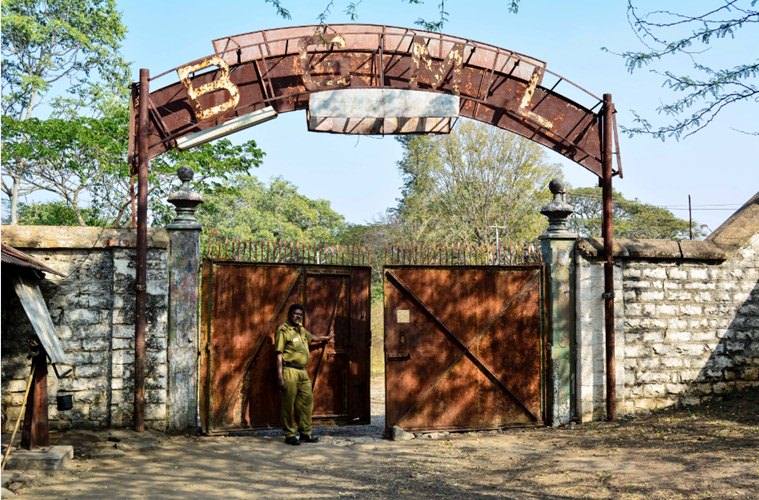 A security person guards the Gifford shaft in Champions mines and its rusting equipment.
A security person guards the Gifford shaft in Champions mines and its rusting equipment.
The proximity to Bengaluru — one-and-a-half hours by train — gave the community a lifeline when they needed one. But over the years, few other job opportunities have come up. Many resent the lack of work and the drudgery of a long commute to jobs that are often not secure. “Our children don’t even get to see the sun rise in KGF, except on Sundays,” says Doreswamy, 64, who worked as a security guard for seven years in Bengaluru.
Chandiran, 27, travels every day for work, heading to a factory in Whitefield, where he sticks MRP stickers on products; he earns Rs 10,000 a month. The grandson of an underground worker, Chandiran says he doesn’t know much about life in the mines. But if the BGML does get a new avatar — as leaders such as Divakaran seem to promise — he would chance it. “It is difficult and dangerous work. So what? I will go down. It’s our fate,” he says, stony-faced.
Divakaran, who heads the BGM All Employees Industrial Cooperative Society, believes – in the face of a lot of scepticism — that a Supreme Court order inviting a global tender is the last hurdle to reopening the mines. Under this proposed arrangement, the employees’ forum would own and run the mine. “KGF is still laden with gold. It became a loss-making company, because the government never sold gold at the market rate. Look at the price of gold in India. We can never run in losses,” he says.
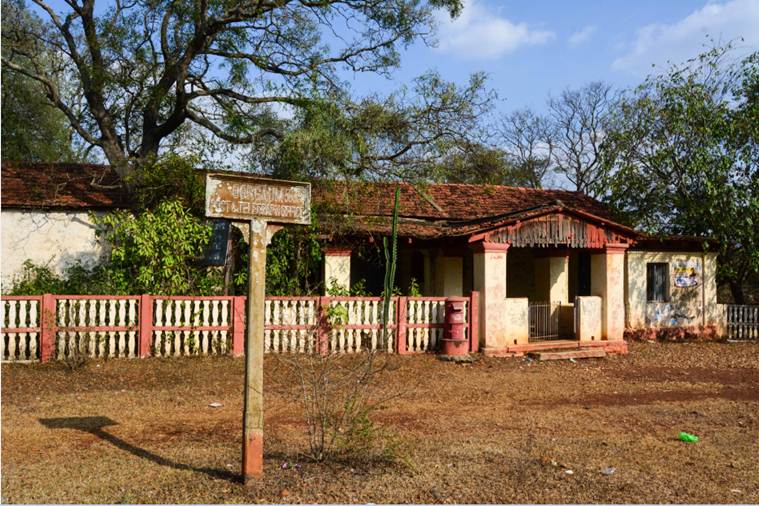 The Oorgaum post office has fallen into disuse.
The Oorgaum post office has fallen into disuse.
In Gabriel Garcia Marquez’s Love in the Time of Cholera (1985), the scent of cyanide is that of bitter almonds, reminding the narrator of “unrequited love.” Atop this tailing dump, which some believe has leached into and contaminated KGF’s groundwater, an acrid smell speaks only of abandonment. “We were slaves only, ma. The Britishers never bothered about us,” says Selvaraj, a note of resignation in his voice. “They only want production to go up, They wanted gold. If they found anyone pilfering gold, they would send the whole family back to North Arcot. They put us in a camp, which was only straw huts and tents. Why? So that anytime, they could move us out. Sometimes I think, if it were not for Independence, we would still have been like that, we would still be slaves,” he says.
Even if the women feared for the lives of their men, he says, the darkness of the mines was the only glimmer of hope. “Only when you went down would you eat. Those days where was the money? What was money?” he asks.
All the miners talk of the sighting of gold — like veins of light visible on the dark rocks of Champion reef, so called because of the rich ore; the golden nuggets which were soft to the touch; and the showers of gold dust that lay scattered after a stormy rock-burst. “Soon after I started working, I saw gold. There was gold dust, gold nuggets. But I never took even one gram away,” he says.
Nor did he earn enough to hoard the noble metal. “We were paid so little. The British cheated us, the government as well — we were denied the right compensation. The little gold I had is pledged to the bank because I needed money to pay for my daughter’s education,” he says.
“Yes, we are sitting on gold, but look at us. What to do? It is our fate.”
This article appeared in print with the headline ‘After the Gold Rush’.
Apr 19: Latest News
- 01
- 02
- 03
- 04
- 05











